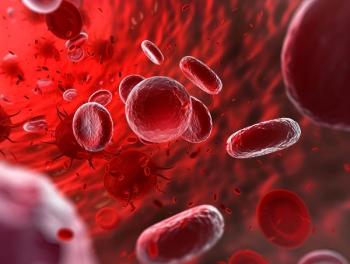
Combination Therapy Increases Overall Survival in Patients with TNBC
The Impassion130 trial evaluated whether atezolizumab plus nanoparticle albumin-bound paclitaxel increased overall survival in patients with triple negative breast cancer when compared to chemotherapy alone.
Researchers from the Queen Mary University of London and the New York University Cancer Institute have concluded that the combination of atezolizumab plus nanoparticle albumin-bound (nab)-paclitaxel increased overall survival (OS) in patients with triple negative breast cancer compared with chemotherapy alone. The findings were presented at the 2019 American Society of Clinical Oncology Annual Meeting in Chicago, Illinois.
The purpose of the trial was to determine whether or not the first IMpassion130 analysis, presented at the 2018 ESMO Congress in Munich, was consistent in OS. The first analysis had found that the combination therapy reduced cancer growth and the risk of disease worsening or death by 20% in all patients. The presentation involved the second interim overall survival analysis from IMpassion130 after 59% deaths in the intention-to-treat population.
“As we all know, patients with mTNBC have a poor prognosis with the standard-of-care chemotherapy alone, since the median overall survival is approximately 18 months,” said lead author Peter Schmid, PhD. “As we have presented, IMpassion130 is the first phase 3 study of cancer immunotherapy in mTNBC to demonstrate the clinical benefit of in PDL-L1+ patients."
The IMpassion130 phase 3 trial enrolled approximately 902 patients with metastatic triple-negative breast cancer (mTNBC) who had not received prior treatment for metastatic disease. They were randomly assigned to either chemotherapy (nab-paciltaxel) plus atezolizumab or to standard chemotherapy plus placebo. Investigators looked at whether the drug combination could slow cancer growth and prolong life in all patients and in those expressing PD-L1. The median follow-up was 12.9 months.
According to Dr Schmid, the OS was significantly higher for patients who received nab-paciltaxel plus atezolizumab (51%) compared with chemotherapy alone (37%). Most adverse effects were due to chemotherapy and occurred at a similar rate in both treatment groups, although there was a minor increase in nausea and cough in the combination group.
TNBC is the most aggressive type of breast cancer. It is relatively rare and often affects younger women. Once the disease becomes metastatic, the median survival is approximately 12 to 15 months. TNBC does not have receptors for the hormones oestrogen or the protein human epidermal growth factor receptor 2 (HER2), meaning it cannot be treated with hormone therapy or drugs targeting HER2. The main drug treatment is chemotherapy and most patients develop resistance to chemotherapy within a few months.
The second IMpassion130 interim OS analysis was consistent with the first analysis of its kind and found an increase in OS in the combination therapy atezolizumab plus nab-paclitaxel compared with chemotherapy alone.
“IMpassion130 is the first and only phase 3 study to show the clinically meaningful benefit of first-line immunotherapy in mTNBC. The therapy was well tolerated, with no cumulative toxicities and no new- or late-onset safety signals,” concluded Dr Schmid. “This sets a new benchmark as the first therapy to cross the 2-year landmark overall safety benefit in first-line therapy for PD-L1+mTNBC.”
Reference
- IMpassion130: updated overall survival (OS) from a global, randomized, double-blind, placebo-controlled, Phase III study of atezolizumab (atezo) + nab-paclitaxel (nP) in previously untreated locally advanced or metastatic triple-negative breast cancer (mTNBC) [abstract]. Accessed June 4, 2019. http://abstracts.asco.org/239/AbstView_239_252769.html
- Some patients with metastatic triple negative breast cancer live longer with immunotherapy [ESMO 2018 Press Release]. ESMO website. https://www.esmo.org/Press-Office/Press-Releases/IMpassion130-atezolizumab-nab-pac-triple-negative-breast-cancer-Schmid. Accessed June 4, 2019.
Newsletter
Stay informed on drug updates, treatment guidelines, and pharmacy practice trends—subscribe to Pharmacy Times for weekly clinical insights.


















































































































































































































